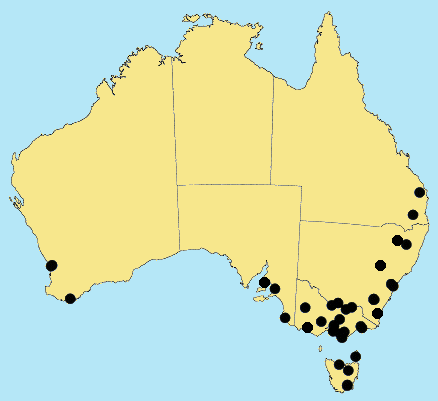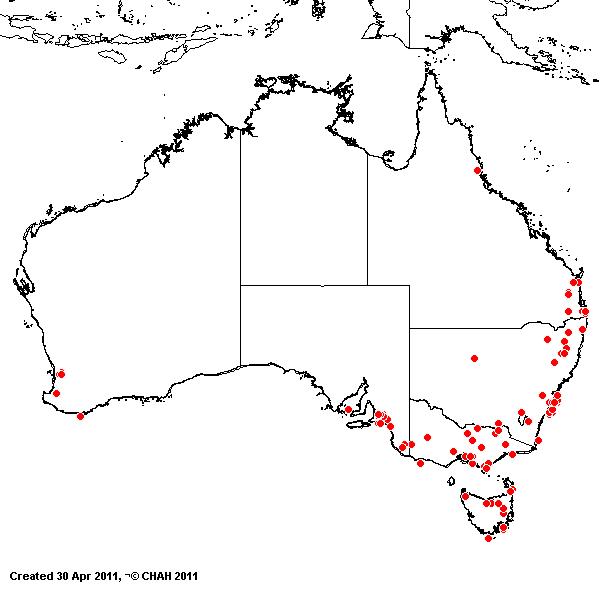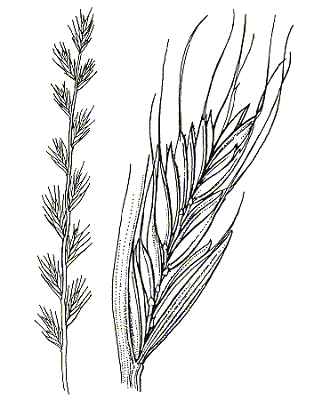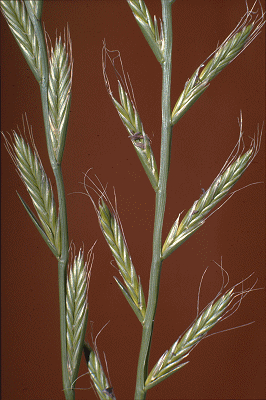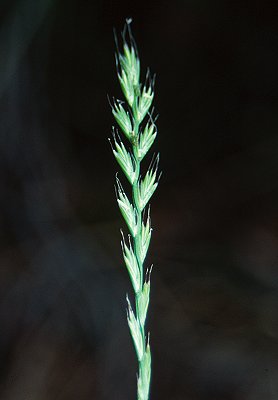Lolium multiflorum* Lam. Fl.
Franc. 3: 621 (1778).
Classification. (GPWG 2001) : Subfamily Pooideae.
Tribe Poeae.
Type of Basionym or
Protologue Information: LT: Anon. herb. Lamarck, France: les environs de Peronne (P). LT designated by Terrell, Techn.
Bull. U.S.D.A. 1392: 10 (1968).
Key references
(books and floras): [2002] D.Sharp & B.K.Simon, AusGrass, Grasses of
Australia, [2002] J.Wheeler, N.Marchant & M.Lewington, Flora of the
South West (422), [2006] J.Jessop, G.R.M.Dashorst, F.M.James, Grasses of
South Australia (134), [2008] S.W.L.Jacobs, R.D.B.Walley &
D.J.B.Wheeler, Grasses of New South Wales (297), [2009] A.Wilson (ed.). Flora
of Australia, Vol 44A. Poaceae 2 (286), [1992] J.R.Wheeler et al, Flora
of the Kimberley Region (288, Fig.38).
Illustrations:
[1984] N.T.Burbidge. rev. S.W.L.Jacobs, Australian Grasses (192), [2006] J.Jessop, G.R.M.Dashorst,
F.M.James, Grasses of South Australia (135, fig. 89), [2008] S.W.L.Jacobs,
R.D.B.Whalley & D.J.B.Wheeler, Grasses of New South Wales, 4th edn
(297), [2009]. A.Wilson (ed.), Flora of Australia 44A: Poaceae 2
(288, Fig 38).
Habit. Annual
or perennial. Culms erect or decumbent, 30–90 cm tall. Lateral branches
branched. Leaf-sheath auricles present. Ligule an eciliate membrane, 1–2 mm
long. Leaf-blades 6–31 cm long, 4–10 mm wide.
Inflorescence.
Inflorescence solid, a spike. Racemes 1, 10–30 cm long, bearing 21–42 fertile
spikelets on each.
Spikelets.
Spikelets sessile. Fertile spikelets many flowered, with at least 2 fertile
florets (5–15), comprising 5–15 fertile floret(s), with diminished florets at
the apex, oblong, laterally compressed, 7.5–25 mm long.
Glumes. Glumes
similar to fertile lemma in texture. Upper glume lanceolate or ovate, 4–9.3 mm
long, coriaceous, without keels, 4–7 -nerved. Upper glume surface smooth.
Florets. Fertile
lemma 5–8 mm long, without keel, 5 -nerved. Lemma apex dentate, muticous or
awned, 1 -awned. Median (principal) awn 0–13 mm long overall. Grain 2.6–3.8 mm
long.
Continental
Distribution: Europe, Africa, Temperate Asia, Tropical Asia, Australasia,
Pacific, North America, South America, and Antarctica.
Australian
Distribution: Western Australia, South Australia, Queensland, New South
Wales, Victoria, Tasmania.
Western Australia:
Dale. South Australia: Southern Lofty. Queensland: Wide Bay,
Darling Downs, Moreton. New South Wales: Central Coast, South Coast,
Northern Tablelands, North-Western Slopes, Central-Western Slopes,
South-Western Slopes. Victoria: East Gippsland, Gippsland Plain,
Midlands, Otway Plain, Riverina, Wimmera. Tasmania: No region given.
Notes.
Useful as a pasture grass, commonly used is short-term pastures.
Kloot gives the consistent diagnostic
characters as the prominent awning of all florets and a short glume. Common as
a parent of hybrids with L. perenne, the hybrids usually annuals or
short-lived perennial with awned or awnless lemmas and rolled leaf blades.
Introduced. Native to
Europe, now widely distributed. Fields, roadsides and waste places. Flowers
Sept.-Dec.
